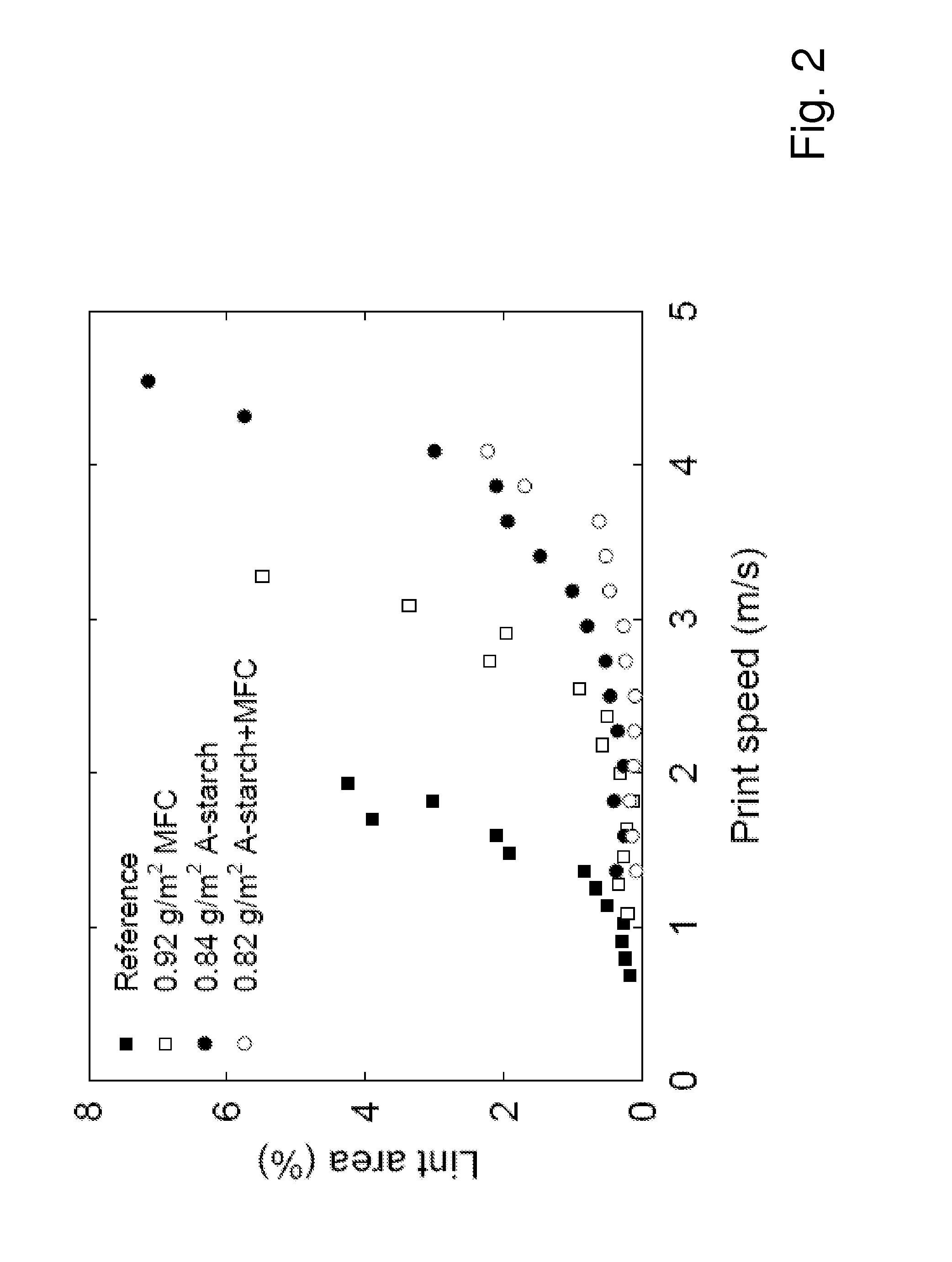Composition for coating of printing paper
a technology of printing paper and composition, applied in the field of coating paper, can solve the problems that the problem of linting cannot be regarded solely as a papermaking problem, the mechanism of linting is not fully understood, and the solution of linting problems may be difficult processes, so as to reduce the tendency of linting and maintain acceptable ink absorption, enhance the interface between the mfc layer(s) and the paper surface, and reduce the effect of linting
- Summary
- Abstract
- Description
- Claims
- Application Information
AI Technical Summary
Benefits of technology
Problems solved by technology
Method used
Image
Examples
Embodiment Construction
Material
Pulp and Paper Materials
[0048]In the linting experiments, a never dried commercial spruce (Picea abies) thermo mechanical pulp (TMP) from Hallsta Paper mill (Holmen Paper, Sweden), was used. For preservation reasons, the pulp was frozen and thawn. After the pulp was thawned, the freeness in deionized water was 173 CSF (ISO 5267-2). Freeness measured at the mill was 102 CSF. In another set of linting experiments a commercial newsprint (improved newsprint, grammage=60 g / m2, Bendtsen surface roughness=150-230 ml / min) was used (Hallsta Paper mill, Holmen Paper, Sweden). In the manufacture of MFC, a commercial sulphite softwood-dissolving pulp (Domsjo Dissolving Plus; Domsjö Fabriker AB, Sweden), from 60% Norway spruce (Picea abies) and 40% Scottish Pine (Pinus sylvestris), with a hemicellulose content of 4.5% (measured as solubility in 18% NaOH) and a lignin content of 0.6% was used. The pulp was thoroughly washed with deionized water and used in its never-dried form.
Internal Tr...
PUM
| Property | Measurement | Unit |
|---|---|---|
| Percent by mass | aaaaa | aaaaa |
| Percent by mass | aaaaa | aaaaa |
| Percent by mass | aaaaa | aaaaa |
Abstract
Description
Claims
Application Information
 Login to View More
Login to View More - R&D
- Intellectual Property
- Life Sciences
- Materials
- Tech Scout
- Unparalleled Data Quality
- Higher Quality Content
- 60% Fewer Hallucinations
Browse by: Latest US Patents, China's latest patents, Technical Efficacy Thesaurus, Application Domain, Technology Topic, Popular Technical Reports.
© 2025 PatSnap. All rights reserved.Legal|Privacy policy|Modern Slavery Act Transparency Statement|Sitemap|About US| Contact US: help@patsnap.com



